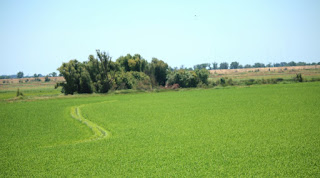I will be away in August. If you wish you visit the studio or view work, let me know and I'd be happy to arrange something before I leave (8/2)!
Email me at Katja [at] KatjaLeibenath.com~
back in September.
Have a great summer!
Saturday, July 18, 2015
Thank you for coming to the Opening!
Thank you for coming out last Thursday!! The Opening Reception was great, it was lovely to see so many of you- if you did not make it, go by the gallery when you are in the Mission!
It is open almost daily by appointment.
a.Muse Gallery, 614 Alabama Street, San Francisco, CA 94110
www.yourmusegallery.com
Exhibit runs through September 13th, 2015
It is open almost daily by appointment.
a.Muse Gallery, 614 Alabama Street, San Francisco, CA 94110
www.yourmusegallery.com
Exhibit runs through September 13th, 2015
Monday, July 6, 2015
Opening Reception: Thu, 7/16/15 6-9PM
 | ||||
| Portola #1 48x60, oil on canvas, 2013 |
The Way You Make Me Feel - curating loss and resilience while the City goes Boom!$$$
Article by Lori Shantzis:
The Way You Make Me Feel addresses the impact of
soaring rents, pending evictions, and growing homogeneity on San
Francisco's dwindling bohemian class. Echoing the uncertainty felt by
many artists and outliers who have called SF their home for decades, the
exhibit seeks to create an environment that elicits communal longing,
shared memory, and a gnawing, visceral sense of instability.
Anchoring the show with three opposing
sentiments—destruction, resilience, and waning fortitude, the gallery
will host three formidable oil paintings by local artists: one of a
demolition scene (Heidi McDowell), one of a middle-aged, same-sex
couple in their artist co-op home (Matt Frederick), and one of the
dwindling remnants of a glacier resting in shallow waters near a
rust-colored bridge reminiscent of the Golden Gate. The latter, also by
McDowell, is actually based on a photograph taken in Iceland, but the
sentiment, that of both holding on and diminishment, sets an eerie
backdrop for this curated dialogue about the current state of San
Francisco—and perhaps cities everywhere.
Wistful cityscapes by painters Katja Leibenath and Randy
Beckelheimer, whose studios are in the Bay View District, simultaneously
invoke a sense of serene detachment while serving to document San
Francisco's urban history. In this particular series, Leibenath, who is
also well-known for her figurative work, sought to “portray a place over
the course of time,” adding that “humans seem too temporary a theme,
next to stoic buildings.”
Beckelheimer gives loving attention to urban scenes, from the heart of Mission Street to Hunter’s Point Shipyard. Both urban settings seem to glow, as if the artist wanted to imbue an other-worldliness onto these less than glamorous architectural subjects.
Beckelheimer gives loving attention to urban scenes, from the heart of Mission Street to Hunter’s Point Shipyard. Both urban settings seem to glow, as if the artist wanted to imbue an other-worldliness onto these less than glamorous architectural subjects.
Employing a much starker palette, the dark, finely wrought
aquatint etchings by printmaker Sarah M. Newton focus on familiar “empty
places,” such as BART stations, devoid of bustling rush hour crowds.
From Newton’s artist statement: “Hand drawn on metal plates, the prints
are created slowly, through etching, scraping, burnishing and proofing
the plates repeatedly. The attention that goes into the development of
the image constitutes a meditation on details and spaces that normally
don’t receive more than a passing notice.”
Echoing this statement, painter Heidi McDowell talks about her
attention to craftsmanship when rendering in oil paint on hand-stretched
canvases images originally taken with a digital camera.
“If we can become more grounded in the present, we have the
ability to make a stronger connection to our changing environment.” This
statement rings particularly true when you consider McDowell’s studio
is in a micro-neighborhood which has again become home-base for many
start-ups and is one of the epicenters of pricy lofts and trendy
restaurants.
Adobe Book’s owner Andrew McKinley’s small photographic portraits
of creatives, many of whom have had to leave the Mission District in
search of more sustainable habitats, call to mind happier, less
stressful times. In an effort to say something about the slow but
palpable exodus of artists from San Francisco in general and the Mission
in particular, curator Lori Shantzis has strung these photos on string
with clothes pins—letting the “people” in this exhibit hang from the
literal rafters of a.Muse Gallery, located in a former warehouse
district which is now “tech central.”
“It’s like anyone who doesn’t make a lot of money has
been ‘hung out to dry,’” says Shantzis, whose gallery is dedicated to
both affordable art and helping to sustain local artists. She notes
this definition of the idiom “hung out to dry” in the Wiktionary: To abandon someone who is in need or in danger, especially a colleague or one dependent.
“Yup,” says Shantzis, “that pretty much sums it up.”
Subscribe to:
Posts (Atom)





